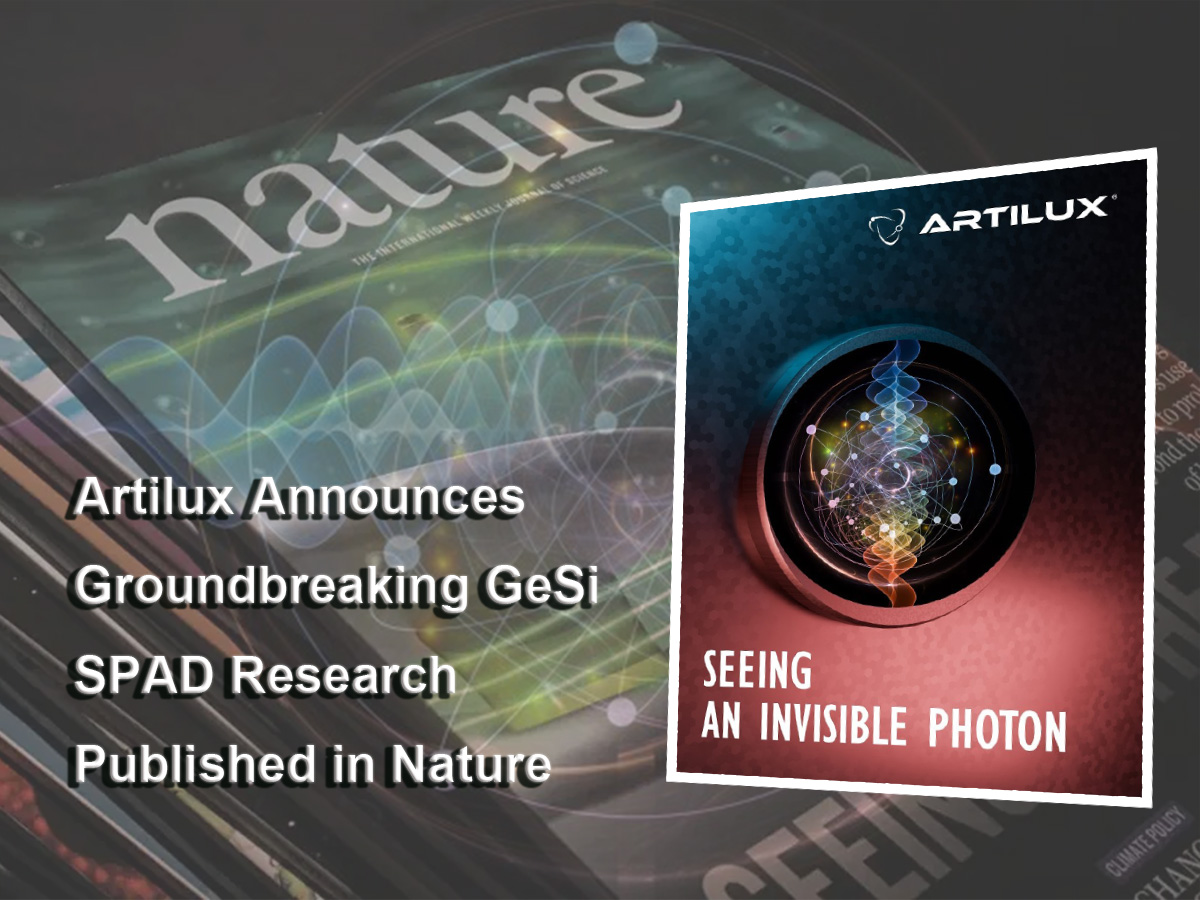
Artilux, the renowned leader of GeSi (germanium-silicon) photonics technology for CMOS (complementary metal-oxide-semiconductor) based SWIR (short-wavelength infrared) sensing and imaging, announced today that the research team at Artilux has made a breakthrough in advancing SWIR GeSi SPAD (single-photon avalanche diode) technology, which has been recognized and published by Nature, one of the world’s most prestigious scientific journals. The paper, titled “Room temperature operation of germanium-silicon single-photon avalanche diode,” presented the Geiger-mode operation of a high-performing GeSi avalanche photodiode at room temperature, which in the past was limited to operation at a low temperature below at least 200 Kelvin. Nature’s rigorous peer-review process ensures that only research of the highest caliber and broadest interest is published, and the acceptance and publication of the paper in Nature is another pivotal mark in exemplifying Artilux’s leadership in CMOS-based SWIR sensing and imaging.
The research work, led by Dr. Neil Na, CTO of Artilux, has unveiled a CMOS-compatible GeSi SPAD operated at room temperature and elevated temperatures, featuring a noise-equivalent power improvement over previously demonstrated Ge-based SPADs by several orders of magnitude. The paper showcases key parameters of the GeSi SPAD, including dark count rate, single-photon detection probability at SWIR spectrum, timing jitter, after-pulsing characteristic time, and after-pulsing probability, at a low breakdown voltage and a small excess bias. As a proof of concept, three-dimensional point-cloud images were captured with TOF (direct time-of-flight) technique using the GeSi SPAD. “When we started the project, there were overwhelming evidence in the literature indicating that a room-temperature operation of GeSi SPAD is simply not possible,” said Dr. Na, “and I am proud of our team turning the scientific research into a commercial reality against all odds.”
The findings set a new milestone in CMOS photonics. The potential deployment of single-photon sensitive SWIR sensors, imagers, and photonic integrated circuits shall unlock critical applications in TOF sensors and imagers, LiDAR (light detection and ranging), bio-photonics, quantum computing and communication, artificial intelligence, robotics, and more. Artilux is committed to continuing its leadership in CMOS photonics technology, aiming to further contribute to the scientific community and photonics industry.
David Weng, CEO of Taiwania Capital, stated that Artilux has long been committed to the field of photonic technology. Its exclusive development of room-temperature SWIR GeSi single-photon avalanche diode (SPAD) technology has overcome the research and development bottleneck that the industry and academia have faced for over two decades. This breakthrough offers scalable, cost-effective solutions across various domains such as artificial intelligence, LiDAR (light detection and ranging), robotics, and more, heralding a new era of innovation in single-photon technology applications. Through this unique technology, Artilux has been featured in Nature, one of the world’s most authoritative scientific journals, showcasing Taiwan’s startup technology in a leading international position. This achievement marks an important achievement for the Taiwania Capital in nurturing promising startups and driving innovation in the industry.

